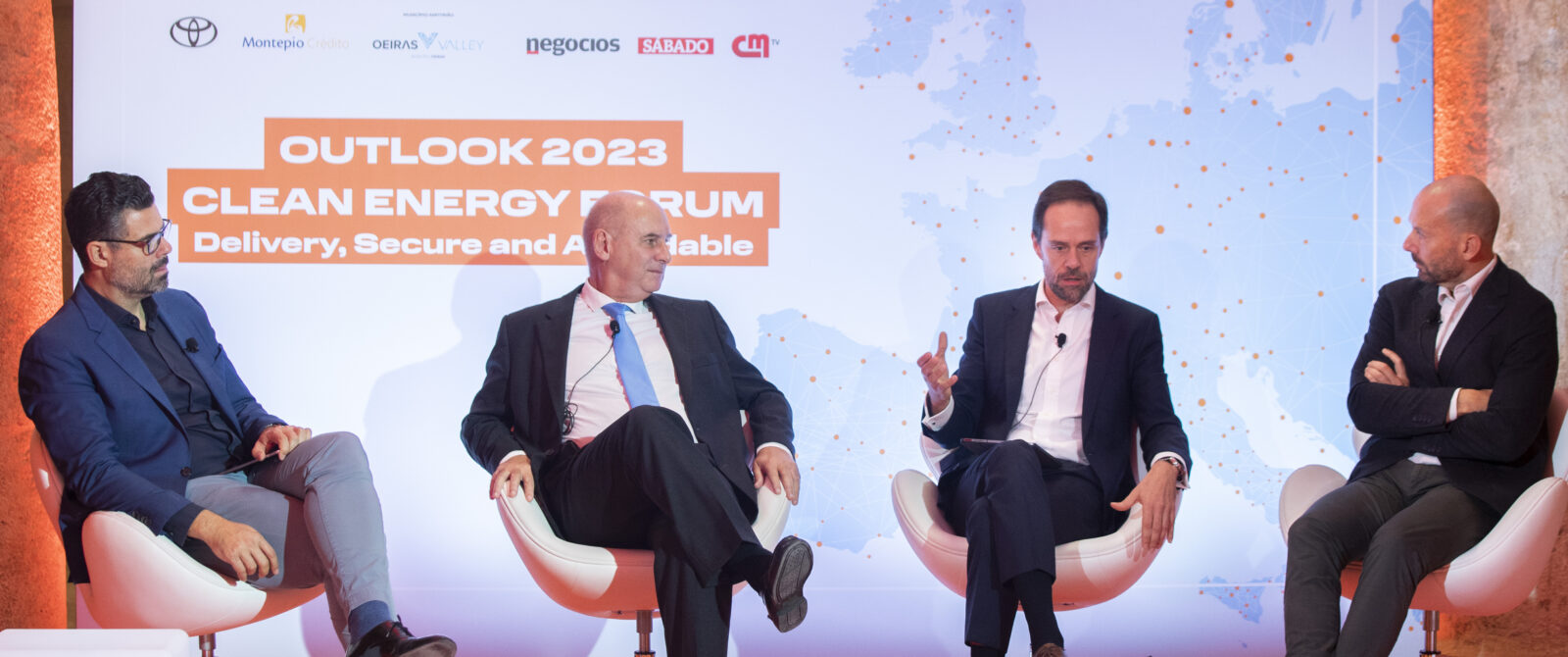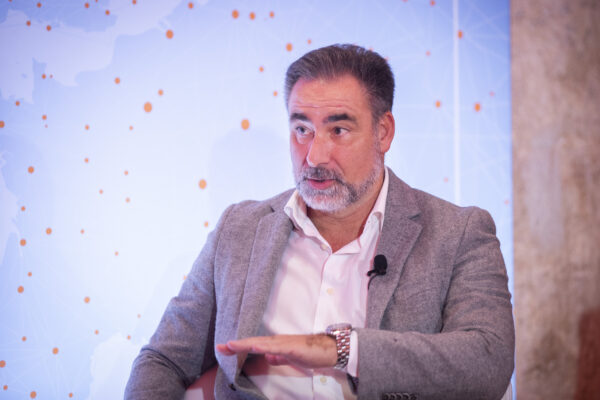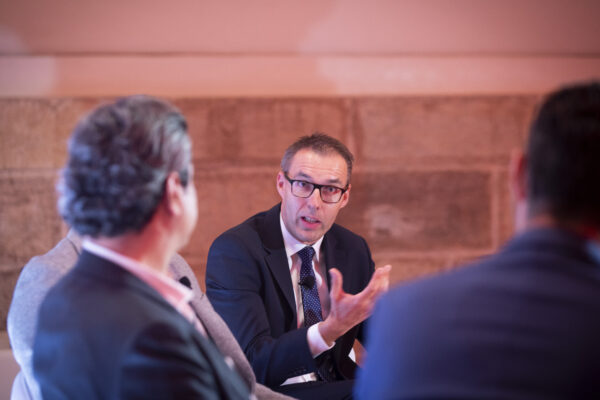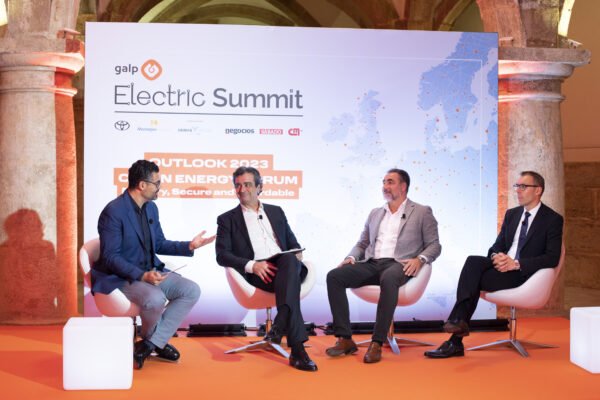The future passes through green hydrogen
Green hydrogen could become one of the largest energy sources in the European Union, and the port at Sines lies at the epicentre of this transition. Executives from Galp, from the Sines port administration body and from the European Green Hydrogen Acceleration Center join the panel to discuss investments in H2.
There’s a new dynamic around green hydrogen in the European Union, and the hope is that H2 will be the fuel to power e-mobility and a new source of energy. Although it currently accounts for less than 2% of energy consumption and is used chiefly in chemical products such as plastics and fertilizers, the fact is that with the European Union’s response to Russia, via its REPowerEU plan, H2 could actually become one of the EU’s main energy sources.
Following Russia’s invasion of Ukraine, the REPowerEU programme seeks to more than double H2 production by 2030, a giant leap from the goals set in 2021.
During the “Clean Energy Forum Outlook” panel discussing Green Hydrogen, Sérgio Machado, the head of Hydrogen Galp, highlighted the European Union’s new targets: “Since the 24th February [Kiev’s invasion by Moscow] something very important happened which is now putting green hydrogen at the forefront to guarantee security of supply of energy for Europe. And that’s why REPowerEU is tripling the H2 targets in Europe: from 7 million tonnes per year to 20 million tonnes per year in 2030”.
But he warns that a lot has to happen if this is to become a reality. The epicentre of Europe’s new energy dynamic is the port of Sines, in southern Portugal, where Galp plans to transform its refinery into a green hydrogen hub. “It’s good for us to connect Sines and the Iberian Peninsula to the rest of the world, but I think we have a great opportunity in Iberia: using the most competitive green hydrogen in Europe, and that’s because we have the cheapest solar energy in Europe.”
SUBTIT O corredor de H2 em Sines
The port of Sines is being developed as “a green corridor of hydrogen in the near future”, entailing a total investment of one billion euros, including an ammonia factory – as emphasised by Duarte Lynce de Faria, a member of the Board of Directors of APS – the Ports of Sines and the Algarve.
All of this from the standpoint of the new strategic plan of the 3 “Ds”: “Decarbonise, digitalise and diversify.”
Many bodies are contributing towards H2 investment in the port of Sines, for example international consortiums such as Madoquapower 2X, the port of Rotterdam and major companies such as Vopak, Engie and Shell. “The idea is to have an industrial unit, the electrolyser, the storage and the capacity to export green hydrogen in ships in the form of liquefied natural gas, such as ammonia”, he explained.
“Why do we need a port such as Sines to deliver renewables in the future in Europe?” This rhetorical question was posed by the Sines and Algarve ports executive. His answer is a pragmatic one: “Because we have ships capable of carrying liquefied gases to export hydrogen using ammonia. This is the starting point. Secondly, in Sines we have a very wide area of logistical and industrial zones, in line with the plans of the port. We are going to produce hydrogen by different means – solar, wind and wave power.” In other words, the key conditions are already in place: access to water, energy and a storage capacity.
Duarte Lynce de Faria pointed out that investments need to be made in electrical interconnections. “We need these electrical grids to bring this renewable energy from Iberia to Sines, and these interconnections are key, and then we have to make sure that these renewables are additional, and that this is new capacity that we are adding, that we aren’t cannibalising renewables that are already on the market.”
Galp’s Sérgio Machado states that the company is going to replace grey hydrogen with green hydrogen, and that this can be achieved in Sines because it has access to solar and wind power. “But we need to have that access. We need around 600 to 700 megawatts of electrolysers and over one thousand hectares of solar and wind farms and we cannot have that all concentrated in one place around Sines”.
To strengthen this energy capacity, the port’s administration is envisioning “floating wind platforms” 12 miles from Sines. As Duarte Lynce de Faria explains, “in the future we want to have wind farms that produce 2 GW per year, so that will be another way of adding the wind that you need. Not on land, but rather on platforms”. There is a pilot project underway near Viana do Castelo to have more floating platforms to produce more solar energy and to take advantage of the wind, tide and waves.
Sérgio Machado of Galp added to the debate stating that the new roadmap imposed by the European Commission means that each ship will pay different taxes according to the amount of green energy or fossil fuels it will be carrying. “For us the problem is each port having the capacity to supply the right fuel to each ship.”
Mikel Lasa, Iberia CEO of EIT – InnoEnergy and EGHAC – European Green Hydrogen Acceleration Center –, added that we have a “tremendous opportunity to bring industry to Portugal and Spain because we have a real energy hub. Let’s work on accelerating permitting and bringing these talents here.”
SUBTITULO Ecossistema europeu de H2
According to Mikel Lasa, the EGHAC is committed to “mobilising a full European ecosystem, where we have 500 industries and companies like Galp.”
He emphasised the fact that major auto manufacturers such as Mercedes and Scania (trucks) are keen to invest in H2 because they want to offer their customers a product which is fully decarbonised, in this case cars and lorries.
The EGHAC has a project which it will formally announce at the beginning of 2023 involving food companies which are at the end of the value chain and which want to be able to say that they can produce their beer or biscuits without being responsible for harmful emissions being released into the atmosphere. “When they do a cost-benefit analysis of using green hydrogen, where the cost is 2 or 3% higher, it makes sense because by doing that they are decarbonising 20% of their emissions related to that product.”











